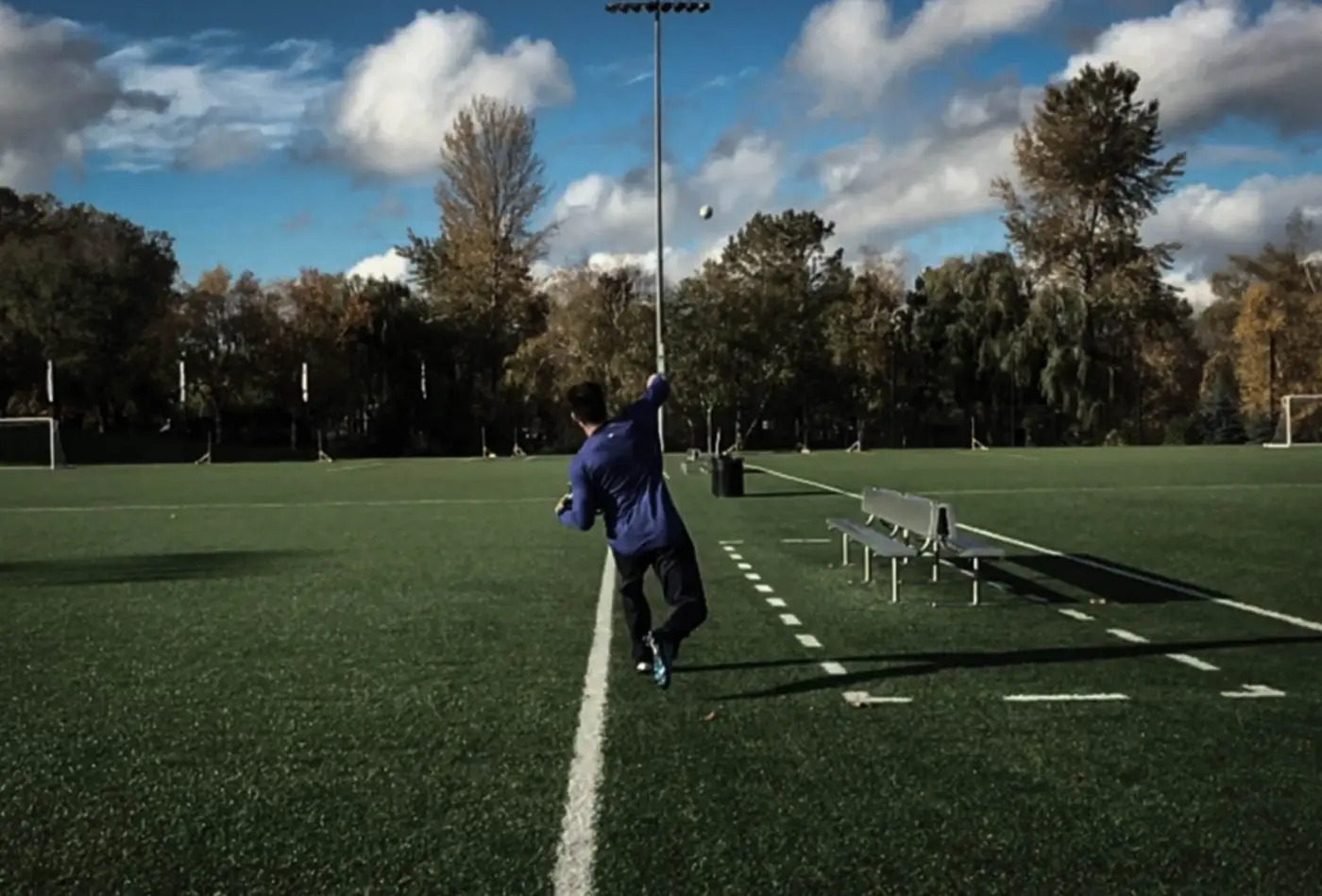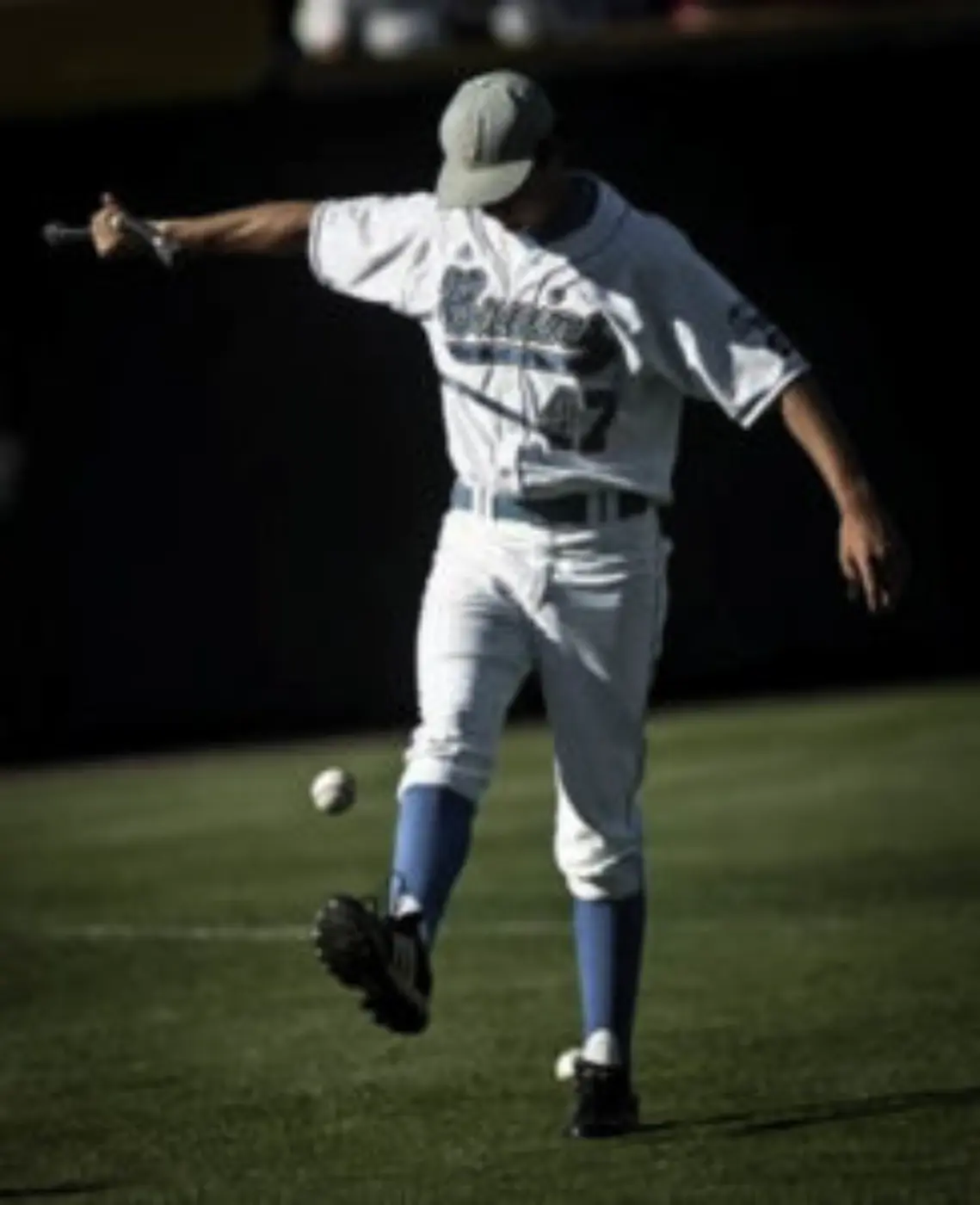The Facts Behind Long Toss Training in Baseball

Long toss in baseball has become a hotly-debated topic as it pertains to training pitchers and position players alike. Popularized by Alan Jaeger, recent proponents of “extreme” long toss include 2011 MLB draft standouts Trevor Bauer and Dylan Bundy, who both have no problem getting the ball out there 300+ feet on a regular basis:
If you don’t know what long toss is or need a refresher course, I highly suggest consuming all of what Alan Jaeger has to say about the topic and reviewing the Jaeger long toss program. You can find any number of videos explaining it, but this one is a nice summary of his methods:
The question on everyone’s mind seems to be: Is a long toss program safe and effective for developing pitching velocity? We’ll try to weigh in – along with our criticisms of how long toss is seen by many players and coaches.
Is Long Toss Safe on the Arm? Does it Work?
Detractors of long toss will immediately rush to ASMI’s 2011 study on the subject, titled Biomechanical comparison of baseball pitching and long-toss: implications for training and rehabilitation (pubmed link). The abstract of the study has this conclusion statement:
Hard, horizontal, flat-ground throws have biomechanical patterns similar to those of pitching and are, therefore, reasonable exercises for pitchers. However, maximum-distance throws produce increased torques and changes in kinematics. Caution is, therefore, advised in the use of these throws for rehabilitation and training.
They say “Aha! See, I told you – long toss doesn’t mimic mound pitching, and therefore is useless! Buy my newsletter and my pitching program!”
Of course, if you have an open mind at all, you’ll see that the conclusion says nothing about that. Additionally, right above the conclusion are the results, which say:
At arm cocking, the greatest amount of shoulder external rotation (mean ± SD, 180° ± 11°), elbow flexion (109° ± 10°), shoulder internal rotation torque (101 ± 17 Nm), and elbow varus torque (100 ± 18 Nm) were measured during the maximum-distance throws. Elbow extension velocity was also greatest for the maximum-distance throws (2573°/s ± 203°/s).
Opponents will point at the fancy numbers that they may or may not understand and say “Uh yeah, the mechanical changes are big and the amount of torque is higher on the shoulder. So it’s less safe!”
Well… there’s more than one problem with that argument, but the main one is the fact that increased shoulder external rotation in the pitching delivery is strongly correlated with release velocity. Are they suggesting that throwing harder is a bad idea, too? (Note: ASMI actually does argue this from time to time, which is… interesting.)

The reality is far more complex, as it usually is. If a pitcher wants to throw 90 MPH or more, he is going to have to:
- Increase overall strength
- Improve force application technique (mechanics)
- Increase mobility and stability in proper areas of the body
For reasons that should be obvious, these things are best done incrementally for maximum effectiveness and safety. If you take a pitcher capable of 80 MPH mound speeds with dynamic shoulder ER (MER) of 160 degrees and maximum elbow extension velocity (MEEV) of 2200 deg/s but can throw a ball at maximum intensity with MER of 165 degrees and MEEV of 2290 deg/s, isn’t he learning how to apply force to the ball in a controlled manner?
Note that this is exactly the technique that is used in our MaxVelo pitching program – whether it comes from long toss (not much given the winter weather in the Pacific Northwest) or high-intensity weighted baseball throwing – and we have a stellar track record when it comes to velocity development and injury prevention.
An athlete is going to have to safely exceed the boundaries that he has set for himself if he is going to make steady progress, and long toss is just one of many ways that this can be achieved.
My Problem with the Long Toss Revolution
Now, given all that, I still have problems with the long toss “revolution.” Through no fault of his own, Alan Jaeger has created a group of people who think long toss is the end-all be-all of training programs, and the media tends to run with this idea. Media outlets have latched on to the idea that Dylan Bundy and Trevor Bauer perform long toss and that is what makes them weird, or different. The reality, of course, is that Dylan is also squatting 450+ pounds in the weight room while drinking broccoli shakes and Trevor is throwing weighted baseballs and using the a Shoulder Tube on national TV while pitching for UCLA.

When I spoke to Denver Bundy (Dylan’s father), we laughed about how Dylan’s “workout” is centered around long toss in the media. He told me that Dylan and Bobby (Dylan’s brother) would go out to a baseball field and play “long toss” out to 300 feet and stay there for 40 minutes! They’d be long tossing for over an hour, and then they’d come in, lift heavy weights, throw weighted balls, and finish their workout!
Long toss is not a substitute for other training modalities – it can’t replace an adequate strength training program and it can’t take the place of proper mobility/stability work. Long toss is simply playing catch. You should long toss for the fun of it and the fact that you will self-discover how to slowly change your mechanics to help you apply force to the baseball in more efficient ways than mound pitching and weighted baseball throwing can’t necessarily help you with. But don’t think of it as a panacea or something that replaces your other training – it’s not.
Long toss is a great way to build arm strength, but there are other ways besides just long toss to strengthen your arm, check out the articles we’ve written on strength training here.
Comment section
Add a Comment
You must be logged in to post a comment.
BaseballThinkTank -
Kyle,
Nice article man! I like how you debate both sides. Especially true about mobility and stability in the “right places”. I think that’s an area that too many overlook. Mobility/Stability is the “tie that binds” IMO. Again, great article!
Lantz Wheeler
Phil Tognetti -
Nice write up, Kyle. So many athletes think they are missing just that one special program or pill that will take them to the next level. What they fail to realize is that there is a larger recipe being implemented with multiple ingredients. You cannot make a successful ballplayer with one ingredient. You need the whole recipe – one part strength training, one part mobility, one part throwing program, one part genetics, so on and so on.
Bring all the ingredients together in the right quantities, and now you have a recipe for success.
Dale Slater -
Extreme long toss has been around for along time. We (pitching staff) trained this method in 1993-95 under Nick Zumsande @ Muscatine C.C… We used 3 shuffle steps instead to train, strengthen the backside and hip to push, explode harder. Increasing your velocity and training your arm to throw, through the catcher vs just to the catcher. Extreme long toss has been around far longer than you think. It goes back further than Jaeger Sports. Great article, but long toss is not just simply playing catch. There is a little more to it.
Coaches Series: Implementing a Driveline Program at a D1 College - Driveline Baseball -
[…] loads will continue to lift, condition, and do the recovery portion of the program while also long tossing and completing sub-maximal command work. We continue to upgrade our facilities to cater to the […]
Pulldowns: The What, Why, and When - Driveline Baseball -
[…] history of pulldowns comes from long toss. As part of Alan Jaeger’s long-toss routine, athletes would throw extension throws out to a […]
Comparison of Elbow Torques Between Pulldowns and Pitching - Driveline Baseball -
[…] is admittedly the best comparison that exists to date. Pulldowns could most likely be compared to max-distance long toss, because both throws are often max effort. The trajectory of the ball would be different; pulldowns […]